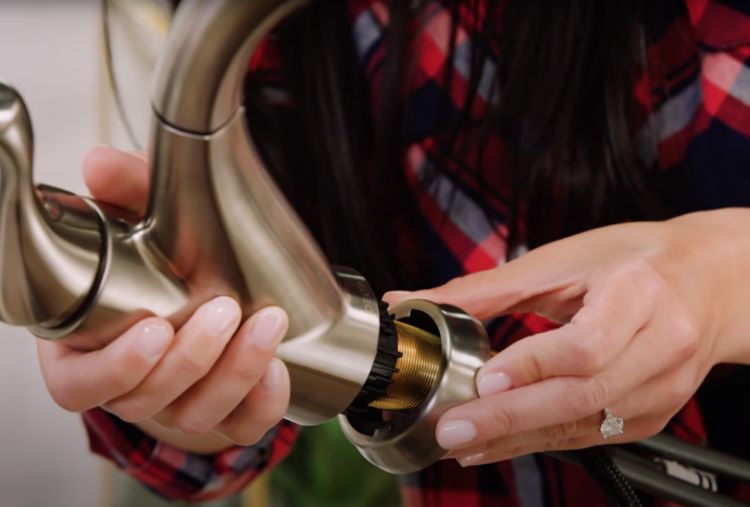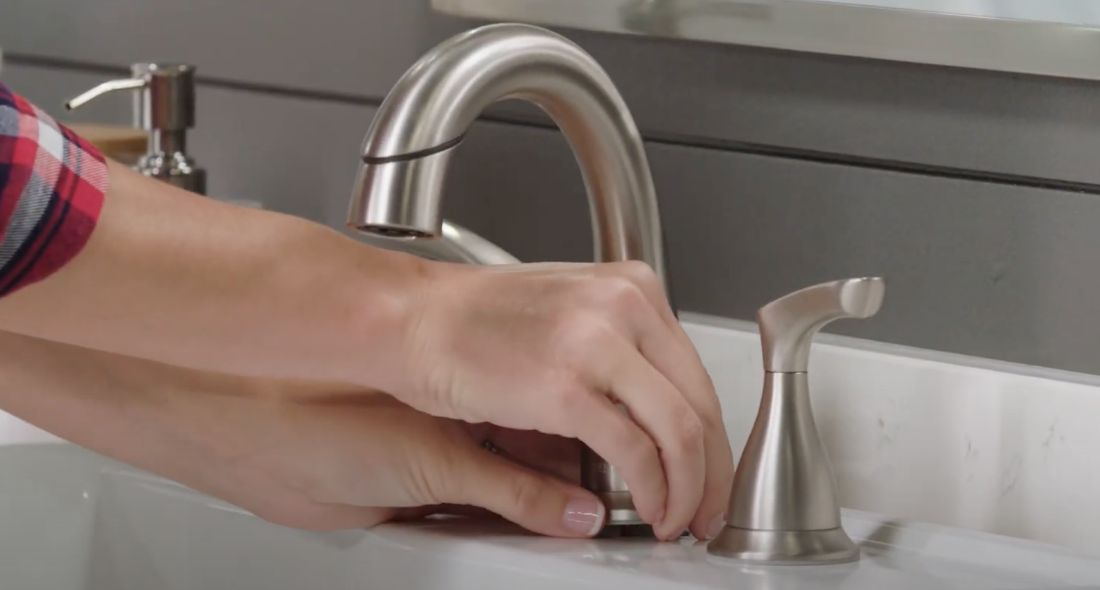The Value of Correcting a Dripping Faucet
The Value of Correcting a Dripping Faucet
Blog Article
Are you searching for help and advice on Should I Repair or Replace a Leaky Faucet??

Dripping taps might look like a small trouble, yet their influence goes beyond just the aggravation of the sound. From wasting water to incurring unneeded monetary prices and health and wellness dangers, disregarding a leaking faucet can lead to various consequences. In this article, we'll look into why it's critical to resolve this typical home issue without delay and properly.
Waste of Water
Ecological Effect
Dripping taps add substantially to water wastage. According to the Epa (EPA), a single faucet leaking at one drip per second can throw away more than 3,000 gallons of water each year. This not only pressures water resources however additionally impacts ecosystems and wildlife depending on them.
Financial Costs
Boosted Water Bills
Beyond the ecological influence, leaking taps can blow up water bills significantly. The gathered wastage in time equates right into greater energy expenditures, which can have been avoided with prompt repair services.
Possible Home Damage
Furthermore, extended leaking can result in damage to fixtures and surface areas bordering the tap. Water build-up can create discoloration, corrosion, and even architectural problems if left ignored, resulting in additional fixing expenses.
Health Concerns
Mold And Mildew and Mildew Growth
The continuous existence of wetness from a trickling tap produces an optimal setting for mold and mildew growth. These fungi not just jeopardize interior air top quality but likewise present health and wellness risks, particularly for people with breathing conditions or allergic reactions.
Waterborne Illness
Stagnant water in trickling faucets can come to be a breeding ground for bacteria and various other pathogens, raising the danger of waterborne conditions. Pollutants such as Legionella microorganisms flourish in stationary water, potentially bring about major ailments when consumed or inhaled.
Do it yourself vs. Professional Repair work
Pros and Cons of DIY Fixing
While some may attempt to deal with a leaking tap themselves, DIY repair services come with their own set of obstacles. Without correct knowledge and tools, DIY attempts can worsen the concern or lead to incomplete repair work, extending the issue.
Benefits of Employing an Expert Plumber
Employing an expert plumber guarantees that the underlying reason for the dripping faucet is attended to successfully. Plumbing technicians have the competence and devices to diagnose and fix tap issues efficiently, conserving time and lessening the risk of more damages.
Step-by-Step Guide to Dealing With a Dripping Tap
Tools Called for
Before attempting to take care of a dripping tap, gather the essential tools, consisting of an adjustable wrench, screwdrivers, replacement parts (such as washers or cartridges), and plumber's tape.
Usual Tap Issues and Their Solutions
Recognize the kind of faucet and the specific concern creating the drip. Typical troubles include damaged washing machines, corroded shutoff seats, or malfunctioning O-rings. Refer to supplier directions or on-line tutorials for step-by-step support on repair work.
Preventive Measures
Normal Maintenance Tips
To avoid trickling taps, carry out routine maintenance such as cleansing aerators, examining for leakages, and replacing worn-out components without delay. In addition, consider setting up water-saving tools or upgrading to much more reliable components.
Value of Prompt Services
Dealing with leaking taps as quickly as they're noticed avoids additional water waste and prospective damages, inevitably conserving both water and money in the long run.
Impact on Property Value
Perception of Well-Maintained Residential Or Commercial Property
Preserving a building in good condition, consisting of dealing with upkeep problems like trickling taps, boosts its perceived value and value among possible customers or occupants.
Influence on Resale Worth
Features with well-kept plumbing fixtures, consisting of faucets, command higher resale worths in the real estate market. Resolving leaking taps can contribute to a favorable impression throughout residential or commercial property examinations and negotiations.
Ecological Responsibility
Private Payment to Preservation
Taking duty for repairing leaking taps straightens with broader efforts toward water preservation and ecological sustainability. Every person's actions collectively make a significant effect on protecting priceless sources.
Lasting Living Practices
By focusing on punctual repairs and adopting water-saving habits, individuals add to lasting living techniques that profit both present and future generations.
Verdict
Resolving a dripping tap exceeds plain convenience; it's a crucial step towards conserving water, lowering monetary expenses, and securing health and wellness and home. Whether through do it yourself repair work or specialist help, taking action to repair leaking taps is a small yet impactful means to promote liable stewardship of resources and contribute to a healthier, extra sustainable future.
How to Fix a Dripping or Leaky Faucet
A leaking faucet is one of the most common problems that homeowners encounter, but it being commonplace doesn’t make it any less annoying. The constant drip drip drip of a leaking bathtub faucet, showerhead, or sink tap can disturb your home’s serenity. Left neglected, a dripping faucet can also result in higher water bills and discoloration or mold growth in your sink or plumbing fixtures.
Fortunately, you don’t have to be a trained plumber to know how to stop a dripping faucet. With some basic tools, replacement parts, and a little patience, leaky faucet repair is a breeze. In this article, we’ll explain what causes dripping faucets and how you can fix them.
What Causes a Leaking Faucet?
Kitchen and bathroom faucets come in all manner of designs, but most involve some combination of valves, O-rings, seals, and washers. The O-ring is usually the weakest link, but any one of these pieces can wear down over time. Heat, moisture, temperature fluctuations, minerals, mold, and movement can contribute to warping and corrosion, breaking the watertight seal. This just comes with the territory of being a homeowner. Everything is always subject to wear and tear, and some component parts of your appliances and fixtures need to be replaced on occasion. At least replacement O-rings are cheap!
More rarely, dripping faucets can be a symptom of excessively high water pressure. Were this the case in your home, you would probably notice that the leak is not isolated to one faucet. Water pressure issues are harder to resolve on your own. We recommend contacting a professional plumber if you suspect your water pressure is too high.
How to Fix a Dripping Faucet
Pipe wrench or monkey wrench Allen wrench set Screwdrivers Old towel or rag Shut off the water.
Before you do anything, you need to turn off the water to keep from drenching your kitchen or bathroom. You should find a valve under the sink and against the wall. Once you’ve turned this valve, try turning the faucet on to confirm that the water source has been cut off.
If you can’t locate your local valve for the faucet you’re working on, you can always shut off the water to the house at the main valve. Of course, this will prohibit anyone from using the sinks, showers, or toilets while you’re working on the faucet that’s giving you trouble.
Plug or block the drain.
You’ll be disassembling the faucet and removing some small bits of hardware. Plug the drain with a stopper or rag to avoid the possibility of a small screw falling into your P-trap.
Take apart the faucet assembly.
There are several varieties of kitchen and bathroom faucets, each with its own manner of assembly. For detailed instructions on how to disassemble your faucet, you can refer to the fixture’s manual or contact the manufacturer. If you know whether you have a ball, disc, cartridge, or compression faucet, you can find detailed schematics online.
In general, you need to begin by removing the faucet handles. You might notice a small screw that you’ll need to remove with a screwdriver or Allen wrench. If you don’t see any visible securing hardware, it’s likely hidden under a decorative cap that can be unscrewed or popped off with flathead screwdriver.
Remove each piece methodically, consulting a schematic when necessary. Take notes or arrange the pieces in such a way to make it easier to correctly reassemble the faucet later.
Remove the cartridge.
Once you’ve removed the handles and securing hardware, you should be able to remove the valve cartridge or stem. Some cartridges will slide right out. Other faucet models will require you to loosen a nut with a pipe wrench before you can remove the valve stem.
Examine the exposed hardware.
With the cartridge or stem removed, inspect the component parts. Check the rubber O-rings for wear and tear. Also examine the seat washer for corrosion or other damage. These pieces are usually the responsible parties for a dripping faucet, but it’s worth inspecting the other component parts while you have the faucet disassembled.
Find replacement parts.
Once you’ve identified which faucet component has failed, find an identical replacement. Your local hardware store should have O-rings, seat washers, and other standard components in stock. If you have a luxury or uncommon faucet, you may have to contact the manufacturer for a replacement part.
It’s a good idea to take your old parts with you to the hardware store so you can compare them with the store’s inventory and be sure you’re purchasing the correct replacement.
Reassemble the faucet.
With your new parts in hand, reconstruct the faucet and handles. Don’t be tempted to overtighten screws or nuts. You might think this could create a better seal, but it can instead damage or bend a delicate part of the assembly and create a new problem for you.
Turn on the water and test the faucet.
The only thing left to do is test your work. Unplug the sink, turn the water back on, and try the faucet. Congratulate yourself on a job well done!
https://www.libertyhomeguard.com/how-to-fix-a-dripping-or-leaky-faucet/

I have been very eager about 4 Common Reasons for a Leaky Faucet and I'm hoping you enjoyed my page. Please set aside a second to share this blog if you enjoyed it. I treasure your readership.
Report this page